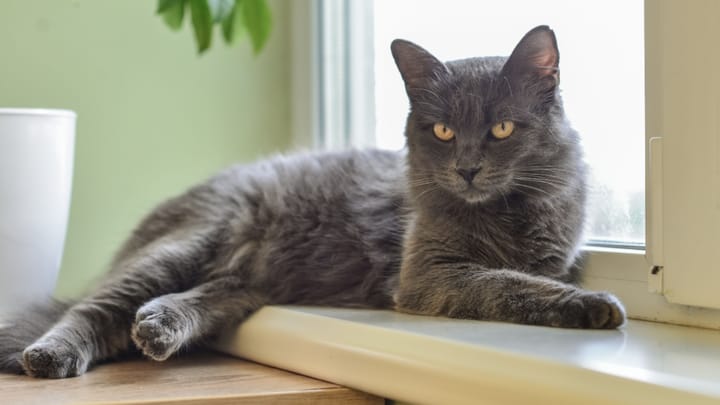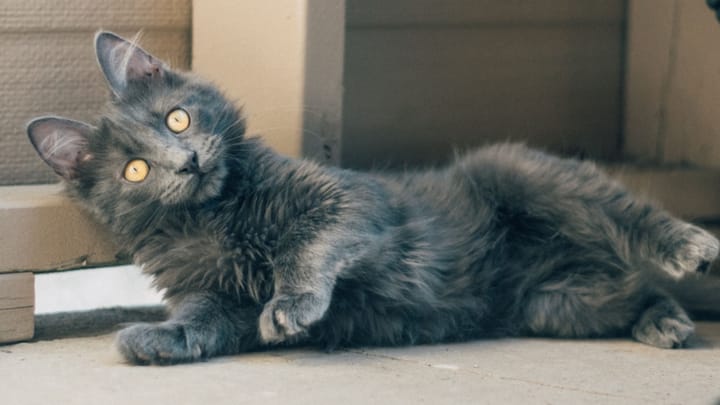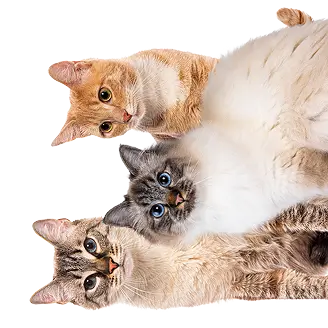Nebelung


The Nebelung is a close relation to the Russian Blue, with whom they share their Russian origins as well as their magnificent blue colouring and silvery shimmer. Their fur is mid-length and silky, and does not tangle. This elegant and affectionate cat truly appreciates the company of humans. Despite loving family life, they prefer calmness.
|
Life expectancy |
The Nebelung has a life expectancy of between 15 and 19 years |
|
Temperament |
|
|
Adult size |
Female
Between 10 and 12 in
Male
Between 10 and 12 in
|
|
Adult weight |
Female
Between 7 and 9 lb
Male
Between 9 and 13 lb
|
|
Coat colour
Blue / grey-slate |
Blue |
|
Type of coat
Mid-length |
Long |
|
Eye colour
The kittens’ eyes are yellow-green when born and become more green during their first 12 months. |
Green
|
|
Purchase price |
The Nebelung costs approximately 100£ |
The Nebelung is nothing but a Russian Blue with mid-length hair. The name comes from German, "nebel", which means mist and has links to fantasy creatures of German legends.
More details about the Nebelung
Nebelung: Origins and history
Their origins are the same as those of the Russian Blue and, like most other breeds, they are quite fuzzy. The latter came from Russia by boat at the end of the 14th century and was reportedly raised by the British.
The Nebelung was born in the United States, thanks to Siegfried and Brunhilde, the pair of cats belonging to Cora Cobb. Links are made with other blue haired cats coming from Russia. The first Nebelung of the Netherlands, in the 90's, came from the same country. A Dutch kitten proved to be a bearer of the "long hair" gene, confirming that the Russian Blue can carry this recessive gene, which does not necessarily express itself.
Currently, this is a rare breed, with only a few breeders around the world. In France, for example, the first kittens were born in 2008.
Physical characteristics of the Nebelung
Their elongated body is muscular and their frame is fine. Their triangular head seen from the front, is adorned with two ears as wide as they are high, with "lynx tips" at the back. The contours of the face has seven facets, like the Russian Blue. Their gray nose overhangs the famous smile typical of this breed, caused by the corners of their mouth which go up slightly. Dark lilac pads complete their long legs. The tail is medium in size but fluffy and thick at the base.
Nebelung: Characteristics
Nebelung: Behaviour
Breed compatibility Nebelung
Nebelung: Purchase price
On average, the price of a Nebelung kitten is approximately £100, the price often varies according to the lineage, the breeder, the age or even the sex. For the monthly budget, it will cost an average of £25/month to support the needs of the Nebelung, by offering a quality diet and making sure to keep your cat healthy.
Nebelung: Shedding
Average
Shedding is slightly more significant during the moulting periods, but it can be helped by brushing the coat to remove dead hair.
Nebelung: Grooming
The silky fur of the Nebelung does not tangle, which does not exempt them from a weekly brushing, especially to avoid the ingestion of too much hair when they groom themselves. This moment will allow you to check the cleanliness of the eyes and ears of your cat.
Nebelung: Health
This robust cat can live for over 15 years.
Their silky coat helps resist the cold.
They can put on weight if they are not given an appropriate diet, or if they aren’t exercising enough.
This breed is not subject to hereditary illnesses. To date, they would not be the victim of any particular disease. On the other hand, as it is a new breed, it is difficult to be entirely sure.
However, they can contract, just like all other domestic felines, all the pathogens and illnesses that exist in cats.
This cat can also be bred with Russian Blues as long as they have a blue coat.





